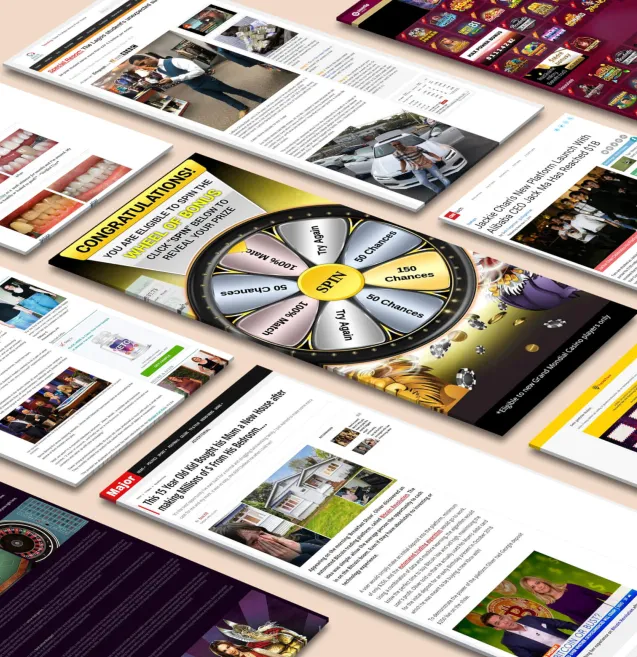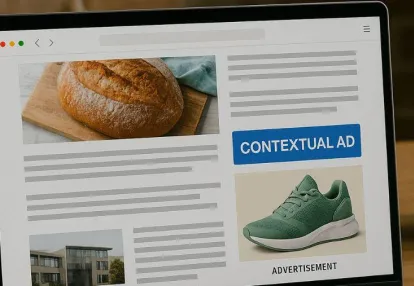
Our spy tools monitor millions of native ads from over 60+ countries and thousands of publishers.
Get StartedIn today's digital world, your advertising success depends on reaching users where they spend most of their time - on their mobile devices. Mobile-optimized content is a strategic approach to creating digital content specifically designed for smartphones and tablets, ensuring seamless viewing and interaction across different screen sizes.
This shift to mobile-optimized content isn't just a trend - it's a fundamental change in how businesses connect with their audience. As smartphone usage continues to dominate internet traffic, adapting your advertising strategy for mobile platforms becomes essential for sustainable business growth.
Mobile-first native advertising takes this concept a step further by integrating ads naturally into mobile platforms, matching the look and feel of the surrounding content. This approach creates a non-disruptive user experience while maintaining advertising effectiveness. The importance of native marketing in this mobile-first world cannot be overstated.
You'll discover 10 compelling reasons why mobile optimization transforms digital advertising:
With these insights, businesses can leverage mobile optimization and native marketing strategies to create more effective advertising campaigns that resonate with their audience.
The numbers tell a compelling story: 55% of all website traffic now comes from mobile devices. This shift represents a dramatic transformation in how users interact with digital content.
Recent data reveals striking mobile usage patterns:
These statistics highlight a clear user preference for mobile browsing, creating a direct impact on advertising effectiveness. Brands that fail to optimize for mobile risk losing significant market share to competitors who embrace mobile-first strategies.
Mobile-first advertising isn't just an option - it's a necessity for reaching today's audiences where they spend most of their time. Your advertising strategy must align with this mobile-centric reality to capture user attention and drive meaningful engagement.
Native advertising, such as those offered by Anstrex, transforms the mobile user experience by integrating seamlessly with existing app and site content. Unlike traditional banner ads that disrupt the user's journey, mobile-native ads match the visual design, content style, and functionality of the platform they appear on.
Mobile native ads deliver 3x higher engagement rates compared to traditional display ads. This success stems from their natural placement within the user's content feed, creating a non-disruptive browsing experience.
The rise of vertical video ads specifically caters to how users hold their phones, with these formats seeing 88% higher engagement than horizontal videos in mobile environments.
Native advertising platforms now offer sophisticated targeting options, allowing ads to appear alongside relevant content that matches user interests. This contextual relevance makes ads feel less intrusive and more valuable to the user's mobile experience.
Responsive design is the foundation of successful mobile-first native advertising. Your ads must adapt seamlessly across different screen sizes - from the latest iPhone Pro Max to compact Android devices.
A well-implemented responsive design prevents common mobile issues:
You can test your ad's responsiveness using tools like Chrome DevTools or BrowserStack. These platforms let you preview how your content appears across multiple devices, ensuring consistent performance and visual appeal.
Interactive features in mobile ads create powerful engagement opportunities you won't find in traditional advertising formats. Tap-to-call buttons let users instantly connect with businesses, while swipeable image galleries showcase multiple products in a single ad space.
Here's what makes interactive elements so effective:
Recent data shows mobile ads with interactive elements achieve:
These interactive features transform passive viewers into active participants, creating meaningful connections between brands and their target audience.
Progressive Web Apps (PWAs) are changing the game for mobile advertising by combining the best features of websites and native applications. PWAs load instantly, work offline, and deliver app-like experiences directly through browsers - eliminating the need for users to visit app stores or download hefty applications.
PWAs create seamless advertising experiences by adapting to user behavior patterns. Your ads load instantly, respond smoothly to user interactions, and maintain consistent performance across devices - driving higher engagement rates and conversions through reduced bounce rates.
Real device testing is crucial for the success of mobile-first native advertising. Your ads may appear flawless on an iPhone 14 Pro but completely malfunction on a Samsung Galaxy A53 - a typical situation in the diverse world of mobile devices.
Keep these testing priorities in mind:
Testing on actual devices reveals real-world issues that emulators miss:
A strong device testing strategy helps you identify and fix these issues before they affect your campaign performance. Major brands have device labs with popular smartphones and tablets to ensure their ads provide consistent experiences across the mobile ecosystem.
Mobile optimization brings significant business advantages that grow over time. Companies that adopt mobile-first strategies see:
These numbers mean real business growth. Mobile-optimized content creates a positive cycle: better user experience leads to increased engagement, resulting in higher conversion rates and customer loyalty. Brands like Airbnb and Uber have shown this success, crediting their mobile-first strategies for significant revenue growth.
Your mobile-optimized content becomes a valuable asset that keeps bringing in benefits, attracting new customers and keeping existing ones happy with smooth experiences on any device.
The world of mobile advertising is changing rapidly. Your brand can't afford to fall behind - mobile-first native advertising isn't just a trend, it's the new standard for digital marketing success.
Consider these compelling reasons to embrace mobile-native ads:
Your competitors are already adapting their strategies to match smartphone user behaviors. By implementing mobile-optimized native advertising now, you'll position your brand at the forefront of digital innovation. The path to capturing your audience's attention lies in delivering seamless, engaging experiences right where they spend most of their time - on their mobile devices.
Take action today. Transform your advertising approach. The mobile revolution waits for no one.
Receive top converting landing pages in your inbox every week from us.
Must Read
As third-party cookies fade away, contextual targeting is making a powerful comeback. Learn how to leverage native ads that align with user intent and content relevance to maintain high engagement and conversions. Discover modern tools and tactics that make cookie-free targeting both precise and scalable. Ideal for advertisers seeking privacy-friendly ways to drive performance in 2025 and beyond.
Liam O’Connor
7 minDec 9, 2025
How-To
AI is transforming the way advertisers approach pop campaigns in 2025. Discover how automation, predictive analytics, and real-time optimization can enhance targeting and boost engagement. Learn practical tips for creating smarter, high-performing pop ads that deliver measurable results. Perfect for marketers ready to stay ahead in the evolving world of AI-driven advertising.
Priya Kapoor
7 minDec 8, 2025
Quick Read
Coordinating ads across multiple channels can significantly amplify your marketing ROI. Learn how to create a unified strategy that aligns messaging, timing, and targeting across platforms like Native, Push, and Pop. Discover how seamless cross-channel integration enhances brand recall and drives more conversions. Ideal for marketers aiming to make every ad dollar count through smarter coordination.
Marcus Chen
7 minDec 7, 2025




